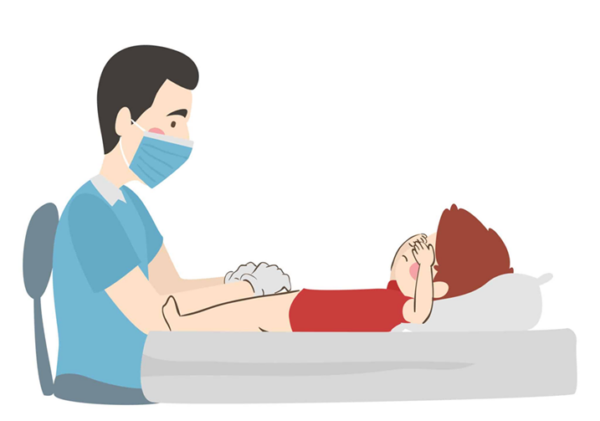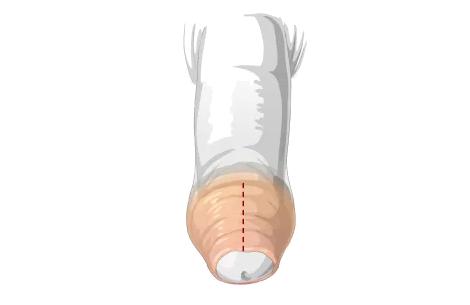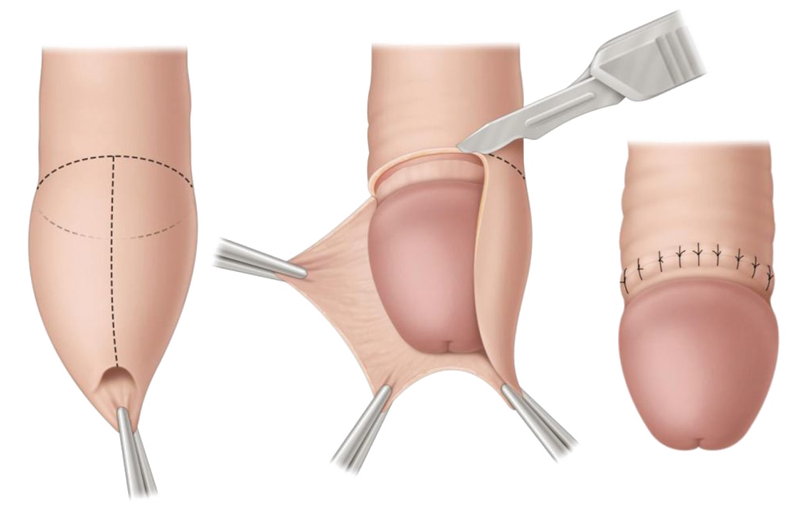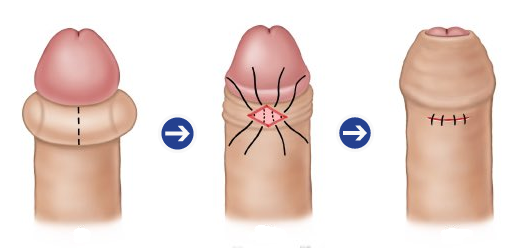Circumcision In Korea
The first step to confidence starts with hygiene
Procedure Process Explanation
Is circumcision absolutely necessary?
Circumcision is a surgical procedure to remove the foreskin that covers the tip of the male penis.
The overall average circumcision rate in our country is about 60%, which is much higher than the rate in other countries. And the frequency of circumcision is gradually increasing to about 90% for those under 18 years of age.
Circumcision is not absolutely necessary, but it helps maintain hygienic genitals by reducing odor, helps prevent various sexually transmitted diseases and urinary tract infections, and affects the sensitivity of the genitals, which helps ensure smooth sexual intercourse.

Hygienic advantages
Removing the foreskin leaves the tip of the penis exposed at all times, making it easier to clean off bacteria, sweat, oils, etc. that may accumulate under the foreskin. This makes it easier to maintain hygiene and reduces the risk of infection or inflammation.
Health benefits
Studies have shown that circumcision reduces the risk of HIV infection and urinary tract infections by up to 50%. Other studies have shown that circumcision reduces the risk of prostate cancer by up to 60%.
Smooth intercourse
It is necessary for satisfactory sexual intercourse, as the foreskin, if too narrow or excessively long, can cause discomfort or pain during sexual intercourse. Also, if the foreskin remains, it is sensitive to sexual stimulation, so circumcision can adjust the sensitivity of the penis.
Types of circumcision
There are several methods of circumcision, and each method can vary depending on the patient’s condition and the purpose of the surgery. The most common types of circumcision are as follows:

Dorsal incision (dorsal incision)
Dorsiotomy is a surgical procedure that does not completely remove the foreskin of the penis, but instead makes an incision on the back and then sutures it back in the opposite direction to widen the hole in the skin covering the glans. This surgery is recommended for adults who have sensitive skin and experience soreness or minor bleeding during sexual intercourse, or for children who are afraid of pain. Since it is a method to treat weak skin, it differs from complete circumcision in that it looks similar to the shape of the penis before surgery because the foreskin is covered again after suturing.

Fantasy excision
Circumcision is the most common type of circumcision, and involves removing a complete circle of the foreskin covering the tip of the penis. This surgery is usually performed under local anesthesia, although in children it may be performed under general anesthesia. After designing the shape of the foreskin to be removed by adjusting the degree of exposure of the glans, the skin is cut off along the marked line, separating it from the subcutaneous tissue. The ends of the excised foreskin can be sutured to create a neat and attractive shape.
What is Gamdon Whaling?
Phimosis is an emergency condition in which the foreskin is pulled back over the tip of the penis and does not return to its original position, putting pressure on the penis, causing severe pain. If not treated immediately, the swelling of the foreskin can block blood flow to the tip of the penis.
The main causes of cataracts are as follows:

Circumcision is a choice for hygiene and health!
Tips on circumcision
Studies have shown that circumcision can significantly reduce the risk of sexually transmitted diseases. It has been reported that the risk of genital herpes infection can be reduced by 25%, the risk of human papillomavirus (HPV) infection can be reduced by 35%, and the risk of HIV infection can be reduced by 65%.
Appropriate timing for surgery
- It is suitable for students in the upper grades of elementary school to middle school. If the penis is too small, surgery is difficult and the ability to tolerate pain is reduced.
- It is said that even newborns can sense pain to some extent, so it can be detrimental to emotional development.
When circumcision is necessary
- When the foreskin surrounding the glans is too tight
- In cases where balanitis and adhesions of the balanitis occur frequently
- In the case of phimosis, where the foreskin is pulled back and squeezes the penis tightly
- In case of pathogens such as gonorrhea
Post-operative precautions
- There is no disruption to your daily life after surgery.
- You can shower after two days, and bathe after about a week.
- Exercise, drinking, and sexual intercourse are possible approximately 2 to 3 weeks after surgery.
